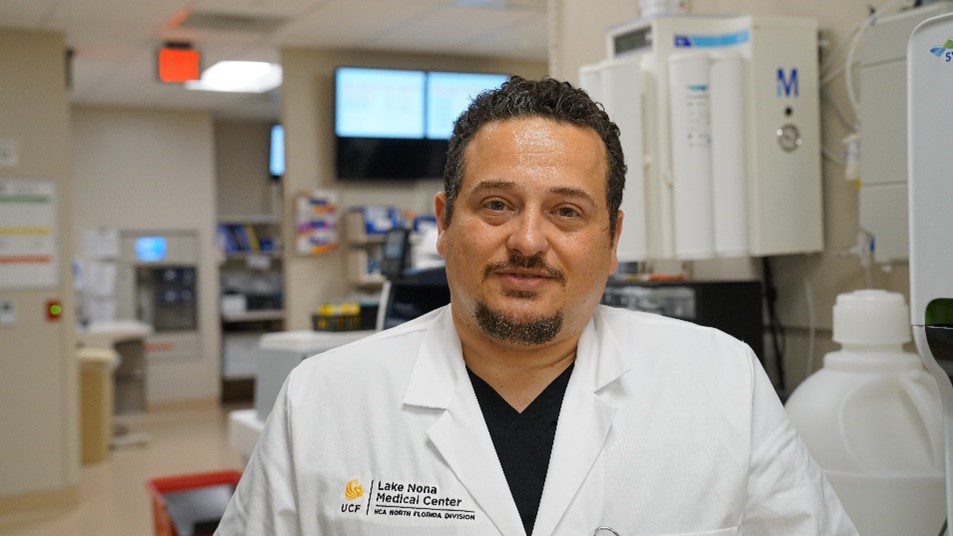
A UCF College of Medicine researcher is working with researchers from Yale School of Medicine to expand the understanding of sarcomas – a rare and deadly malignant tumor that develops in connective tissue like muscles and bones.
Dr. Hatem Kaseb, assistant professor of pathology, is researching how and why sarcomas form and how they are genetically different, depending on the age of the patient. He is focusing on osteosarcomas – bone cancers – and undifferentiated pleomorphic sarcomas (UPS) of bone, an incredibly rare sarcoma that usually appears in soft tissue but can still affect other tissues like bone. These neoplasms take on different shapes and are completely different from the tissues in which the develop.
While these two sarcomas are different, Dr. Kaseb’s bioinformatic analysis found that they have a similar genetic signature and defects in DNA. These similarities may open doors to understanding how to treat both.
Osteosarcoma often develops in preadolescent and adolescent patients, before becoming far less common in adults. However, after the age of 55, osteosarcoma risk increases again. Yet very little research exists on sarcomas in older adults.
“Sarcomas in the younger age set are very common and well-studied,” said Dr. Kaseb. “But there is not a lot of literature about these patients in the older population.”
Dr. William Laskin, professor of pathology at Yale School of Medicine, and Dr. Kaseb assessed genetic and pathological samples from older sarcoma patients at Yale New Haven Hospital to find the likely genetic signature and compared those results to the genomes of adolescents with the disease.
Their analysis discovered 86 genetic mutations in the older patients. These included mutations in the TP53 gene, an important tumor suppressor gene that’s often referred to as “the guardian of the genome. They also found mutations in other tumor suppressor genes, oncogenes and DNA damage repair genes. Oncogenes when mutated can cause malignant tumors because they allow cells to grow uncontrollably,
“When you put these mutations together, mutations in oncogenes and/or tumor suppressor genes, and the inability to repair the DNA damage, it can lead toward neoplasia (the growing of tumor masses) more than they should,” said Dr. Laskin.
Osteosarcoma in older patients are generally more aggressive than their adolescent counterparts. While sarcoma in adolescents usually affect the arms or legs, in the older population it strikes the axial skeleton – bones in the body’s central core such as vertebrae, skull and rib cage, making it more dangerous.
The study is unique in this older osteosarcoma and UPS of bone patients and hopes to lay the groundwork for improving treatments for patients in the future.
“Understanding why sarcomas form is the basis for having a more personalized treatment for patients especially in the metastatic setting,’’ said Dr. Kaseb. “For example, if we find mutations in the DNA repair genes, we can enroll these patients in clinical trials that use drugs that target this genetic mutation, this approach is often referred to as ’targeted therapy.”
“In other words, we can give these targeted drugs to patients with that mutation. These patients will have increased odds of responding, thereby increasing their survival and/or disease-free progression. This approach is how we have found major breakthroughs in a lot of cancers before.”
Due to the rarity of adult sarcomas individual researchers often have limited cases to examine. However, by collaborating with other medical schools and hospitals, researchers can study much larger data sets, Drs. Kaseb and Laskin said.
Dr. Kaseb is a board-certified pathologist who comes to UCF having been trained in the Yale School of Medicine, where he first began this research. He completed his M.D. at the Cairo University School of Medicine and his Ph.D. in human genetics at the University of Pittsburgh.